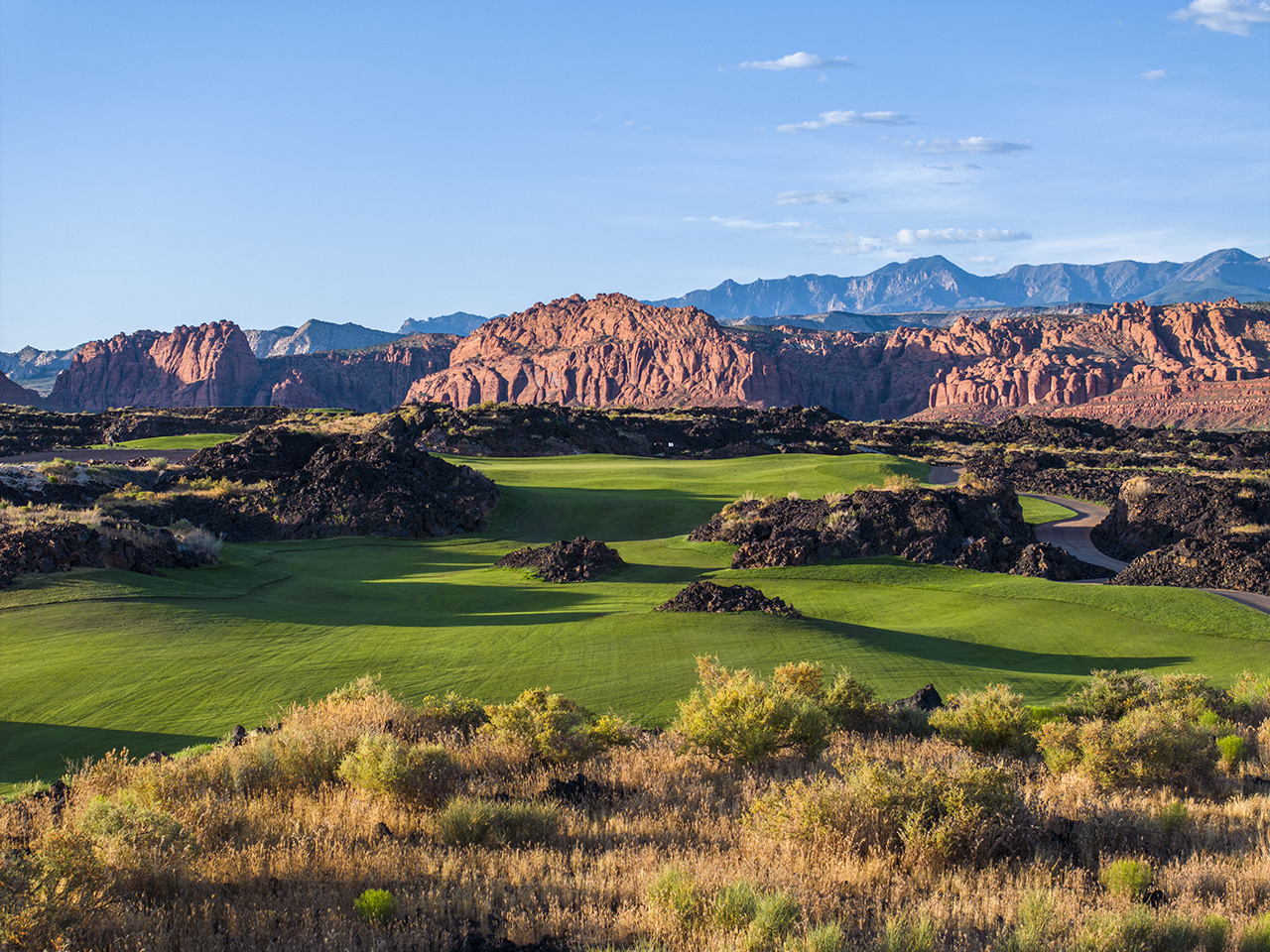IVINS, Utah — It feels like the Beehive State, once known for Mormon temples, a bougie ski resort and the largest saltwater lake in the Western Hemisphere, is having something of a moment lately when it comes to the sports world.
Both BYU and Utah are snugly in the middle of the most recent US LBM Coaches Poll, with the Cougars at No. 15 and the Utes just two spots behind. The Utah Jazz recently locked down All-Star forward and former Most Improved Player winner Lauri Markkanen to a five-year deal worth $238 million and this season Salt Lake City will enjoy its first season as a National Hockey League city with the Arizona Coyotes relocating to the mountain paradise.
Throw in the PGA Tour’s first return to this geographically diverse region in 60 years at this week’s inaugural Black Desert Championship and you’ve got the makings of a Utah coup in a sports world that’s typically dominated by metropolitan regions along the coasts.
That might explain why pro golfers are puffing their chests out a little this week as the Tour’s FedEx Fall rolls through picturesque St. George, a southern municipality that’s closer to Las Vegas than it is Salt Lake City.
“It’s exciting. Utah is kind of the state of sport, so another big event coming to Utah is awesome. Utah fans, people get behind the Jazz and we got a new hockey team, you know, and BYU and Utah and all the colleges,” said Zac Blair, who’s seeking his first PGA Tour victory in the same state where he was reared.

The Tom Weiskopf/Phil Smith-designed Black Desert Resort Golf Course opened in May of 2023 in Ivins, Utah. (Courtesy of Black Desert Golf Club/Brian Oar)
“This is just another big event that I think we’ll get a lot of people coming out to. It’s exciting to have something in your home state. Growing up you dream of playing on the PGA Tour and stuff like that, but never really thought we would have a PGA event here in our home state. Going to be a cool opportunity.”
Although many of the game’s top names will not be on hand — including native son Tonu Finau, who had previous engagements — there won’t be a lack of made-for-TV moments as southern Utah’s red rock mountains will get their day in the sun, literally and figuratively. The par-72 Black Desert Golf Course designed by Phil Smith and the late Tom Weiskopf has been welcomed onto the Tour schedule with rave reviews, rocketing up lists of the nation’s top golf course, including Golfweek’s Best. The design marked the final project from World Golf Hall of Fame 2024 inductee Weiskopf, who died in 2022.
This isn’t the first time Utah has hosted professional golf. The PGA Tour first appeared in Utah in 1930 when World Golf Hall of Fame member Harry “Lighthorse” Cooper won the Salt Lake Open. Seven years later, the Tour returned to Salt Lake City in 1937, when Al Zimmerman won the first of back-to-back Utah Open titles.
The historic Western Open, now known as the BMW Championship, made a stop in the Beehive State a decade later, when seven-time Tour winner Johnny Palmer captured the 1947 tournament in Salt Lake City.
In 1948, the state hosted the Utah Open Invitational, where Lloyd Mangrum edged George Fazio in a playoff. The event was played three more times (1958, 1960, 1963), with the 1963 edition – won by Tommy Jacobs by a stroke over Don January – the last time the Tour played in the state.
While the PGA Tour returns to Utah for the first time since 1963, the Beehive State has been home to the Korn Ferry Tour’s Utah Championship presented by Zions Bank since the Tour’s inaugural season in 1990. Contested at Oakridge Country Club since 2017, past champions of the tournament include John Daly (1990), Zach Johnson (2003), Brendon Todd (2008) and Cameron Champ (2018).
But there is a different feel in this region, a mixture of Arizona heat and Colorado elevation that could give those from the area a distinct advantage, right?
“Of course,” said Patrick Fishburn, who has four top-10 finishes in 2024 and played his college golf at BYU. “Playing at altitude is definitely different for sure. I grew up in Ogden, playing Ogden Country Club, which is probably 4,000 feet elevation and we’re probably 3,000 here. The ball just does different things.
“With the heat this week, there is just a lot of different factors. If you’re maybe not used to that it’ll cause a few more calculations going on in the brain, which for me personally, less calculation is better.”
Golfweek’s Adam Schupak contributed to this report.

